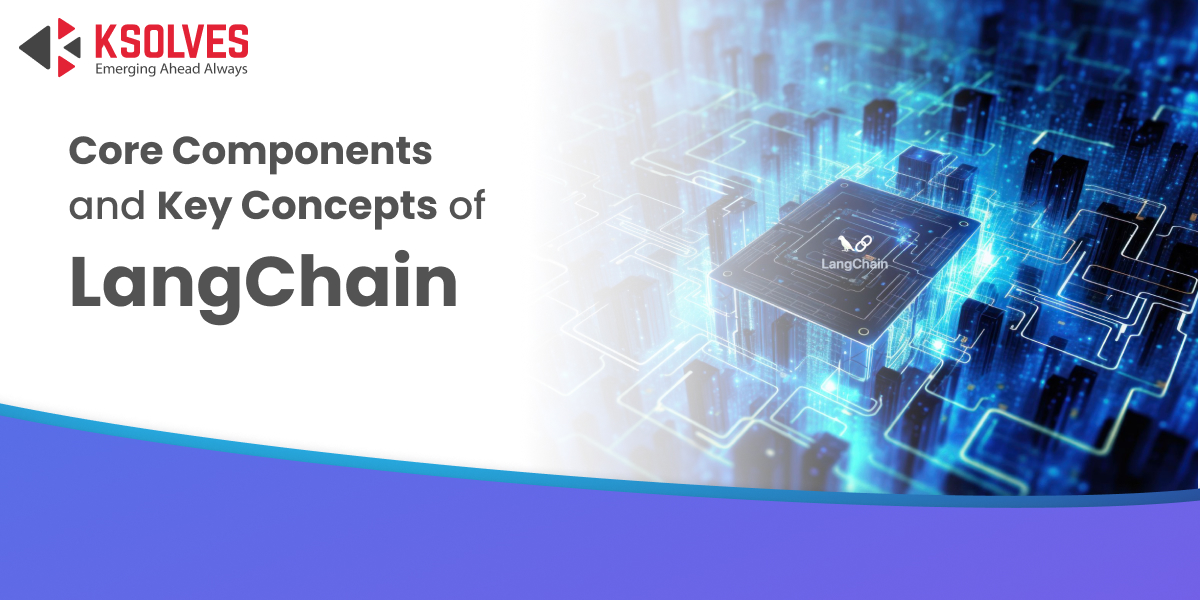10 Steps To Make Your Artificial Intelligence Implementation A Success!
Artificial Intelligence
5 MIN READ
January 14, 2022

In today’s world, artificial intelligence (AI) is the most cutting-edge technology known so far. Artificial intelligence has unquestionably impacted the way B2B customer care teams assist their clients. Faster solutions, round-the-clock support, and predictive learning all add to a company’s capacity to deliver a superior customer experience. A company can’t afford to ignore AI-powered support systems these days, especially with customer service expectations so high.
However, AI implementation isn’t always simple. There are several things that a company and its support staff will need to undertake to adapt. It’s normal for issues to arise. Businesses, on the other hand, do not have to abandon AI. All that is necessary is a knowledge of possible problems and a strategy for overcoming them. Let’s look at 10 essential steps that can help you make your artificial intelligence implementation a success.
10 Steps To A Successful Artificial Intelligence Implementation
-
Acceptance of AI Technology
Many individuals think that artificial intelligence will one day eliminate the necessity for live representatives. This is a frightening concept. However, it has already been demonstrated that AI-powered tools cannot give the same degree of help as a human person. Working with AI will necessitate the use of support staff, who are not replaceable. Furthermore, some businesses are unsure whether or not they want their customers to interact with AI-powered technologies. They want a live agent’s human touch. However, if a company wants to develop and compete in today’s market, it needs to start thinking about artificial intelligence implementation.
-
Get Acquainted With AI
Humans excel in comprehending, reasoning, and interpreting information. They know things and use that information to accomplish various activities in the actual world. However, before using AI in your company, you should understand how robots accomplish these tasks.
Building an AI system is a painstaking process of reversing our features and talents in a computer and then leveraging its computing strength to outperform our abilities. To effectively deploy AI, you must first grasp the numerous sub-domains of Artificial Intelligence. Also, you must know how they might be implemented in your organization. An employee in your organization, for example, can only correctly act on certain input if he has some expertise or experience with it.
-
Identify The Challenges You Face
Not all company obstacles and challenges have the same answer. A business problem is an ongoing issue that requires correct resolution. Difficulty can also be abode as an opportunity. A challenge can be a roadblock that, if overcome, permits a company to make considerable development. It’s critical to recognize that an issue exists before committing time and money to address it with AI.
Although this may appear to be self-evident, it is not always the case. Problem-solving always necessitates the investment of time, money, and other resources. Also, the problem-solving phase must incorporate a return-on-investment study. Thus, one must first identify the issues before moving on to the artificial intelligence implementation phase.
-
Strategize Everything Before AI Implementation
AI’s immense power comes with a great deal of responsibility. Many AI projects and efforts will fail to generate corporate value if they are not run carefully. Developing an AI strategy is a smart method to ensure that your early efforts add value to the company and lead to future development and investment. Initiatives taken before artificial intelligence implementation that lack a plan are more likely to fail.
An artificial intelligence implementation plan should contain architectural and best-practice recommendations to aid data scientists and machine learning engineers in the development of reliable solutions. Selecting best-of-breed technologies that are well to your company’s strengths and weaknesses should be the emphasis of your strategy.
Decisions taken on early projects are more likely to come back to haunt you if you don’t create an architectural roadmap. As a result, developing a plan ahead of time will pave the way for swiftly implementing AI solutions after they’ve been built. You’ll be able to offer business value more quickly as a consequence. Nothing is more frustrating than recognizing a solution’s obvious promise but having to wait months or years to make use of it.
-
Set Up A Pilot Project
When you’re thinking about introducing a new solution or technology for your company, you want to be sure it’ll be advantageous before rushing in full first. A pilot program allows you to try things out on a small scale before making a large investment without knowing if the technology is right for your team or company. You can either rely on cloud services or construct your own AI infrastructure. You just have to pay for what you consume when you use the cloud.
There are also a plethora of tools available in the market to assist you in getting up and running quickly. Ksolves, the leading AI development company, can also assist you in establishing a pilot project. Although cloud options are initially less expensive, investing in your own infrastructure might pay off in the long term. Because the benefits and drawbacks vary depending on your sector, it’s critical to assess your requirements before making a choice.
-
Form a Data Integration Taskforce
Artificial Intelligence has a plethora of perks. It is critical to recognize that AI cannot function in isolation. Instead of operating in vertical customer-focused business divisions, AI may be thought of as a company’s horizontal enabler. AI can influence internal processes, develop new products, and improve existing ones. To accomplish so, we advocate establishing a distinct organization that serves as the company’s core AI enablement point. After that, this unit collaborates with other departments to identify high-impact AI initiatives and provide assistance for their execution. As a result, putting together a cross-functional team, combining divergent databases, and resolving disagreements are all crucial steps in obtaining high-quality data. This ensures that the data is accurate and complete, covering all areas necessary for successful artificial intelligence implementation.
-
Identify The Gaps In The Process After AI Implementation
The majority of artificial intelligence (AI) programs will make blunders when it comes to making predictions. On day one of deployment, no AI model, whether statistical machine learning or natural language processing, will be flawless.
As a result, subject matter experts are required to offer input to the AI model through the whole AI solution. AI models must be retrained regularly, with feedback supplied for improvement. When it comes to deciding where changes are necessary, carefully examining and classifying mistakes can help a lot.
A well-developed error analysis procedure should allow data scientists to examine a significant number of unseen faults and get a thorough knowledge of the types of errors, their distribution, and their origins in the model.
As a result, it’s critical to choose companies like Ksolves that can provide complete AI model lifecycle management capabilities rather than simply a model that can generate early predictions but can’t take input or learn from feedback and self-reflection via mistake analysis.
-
Evaluate Automation Potential
The next stage towards a successful AI adoption is to assess your business process’s automation possibilities. Many businesses see the need to automate internal business operations to reduce operating expenses and boost productivity. In your company, automating business operations can be extremely advantageous. However, a mismanaged automation project can waste resources and deter firms from pursuing future automation initiatives for a long time.
Thus, it places them behind rivals who embrace automation and make it work. A poor choice of a use case for the initial trial or proof of concept is often blamed for an automation project’s failure. It may be challenging to find the proper automation opportunity, but it shouldn’t stop you from using automation in your firm.
You can contact an automation development services company like Ksolves at any moment for assistance in automating the majority of your business procedures.
-
Keep A Check On Performance And Behaviour
It’s difficult to assess the performance and behavior of complicated AI systems in production. A well-thought-out monitoring approach could make a significant impact.
Defining model performance metrics using data available at the inference stage or even later, establishing granular behavioral metrics of model outputs, tracking feature behavior individually and as a set, and collecting metadata that could aid in segmenting metric behavior are all examples of such monitoring strategies in our experience.
To acquire a thorough view of the condition of the system and more rapidly uncover the main causes of errors, it’s a good idea to extend monitoring to the training and test stages. With the support of Ksolves, the finest AI teams are already employing similar monitoring tactics as an intrinsic part of their AI lifecycle. These teams are less stressed and can put their findings into practice, allowing their models to improve dramatically over time.
-
Getting Ahead In AI
Visionary leaders are the foundation of successful AI transformations. Far-sighted but pragmatic leaders lead companies at the forefront of AI, which embrace cognitive technology as part of a strategic attempt to ride the next developmental trend.
Their corporate cultures are driven by innovation, and executives at the top of the business promote investments in both R&D and in-house venture capital divisions. They are unafraid to take enormous risks in the future, despite the chance of failure. To take on the AI issue, they have enormous and expanding data stores, smart algorithms, and massive processing capabilities, as well as an entrepreneurial drive.
Increase Your Chances Of Profit With The Right Partner!
The success of an AI project is highly dependent on the unique qualities of your company, its stakeholders, and the data available. Because every trip is different, it’s critical to start by asking the correct questions and managing expectations early on. Artificial Intelligence’s potential is still enormous. However, a trustworthy partner is frequently required to offer transparency on the benefits of Artificial intelligence implementation for your organization. It also comes with the assistance of Ksolves, an AI & Machine Learning Consulting, and Development company. The AI development company offers cutting-edge AI solutions based on trends and knows several sectors, making them a prominent provider of Artificial intelligence implementation services.



AUTHOR
Share with